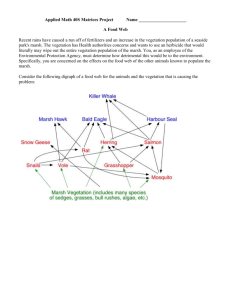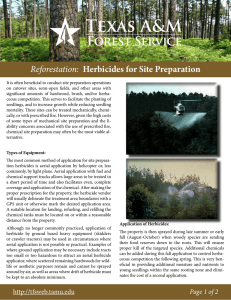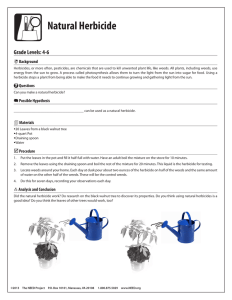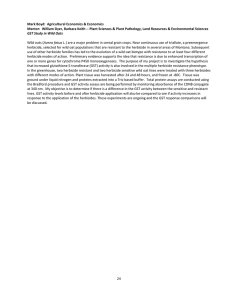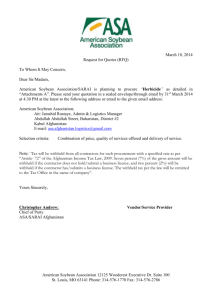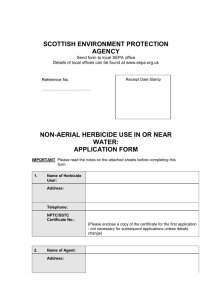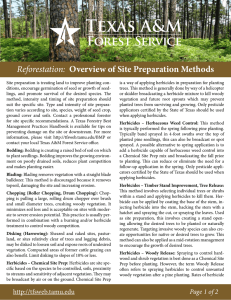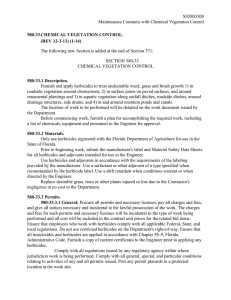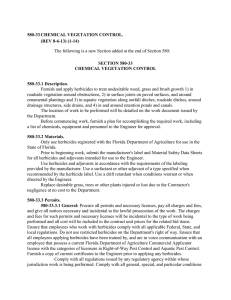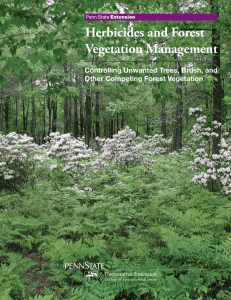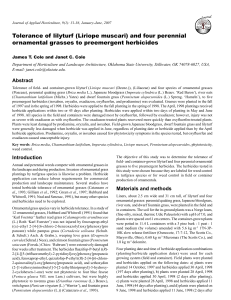Timber Management:
advertisement
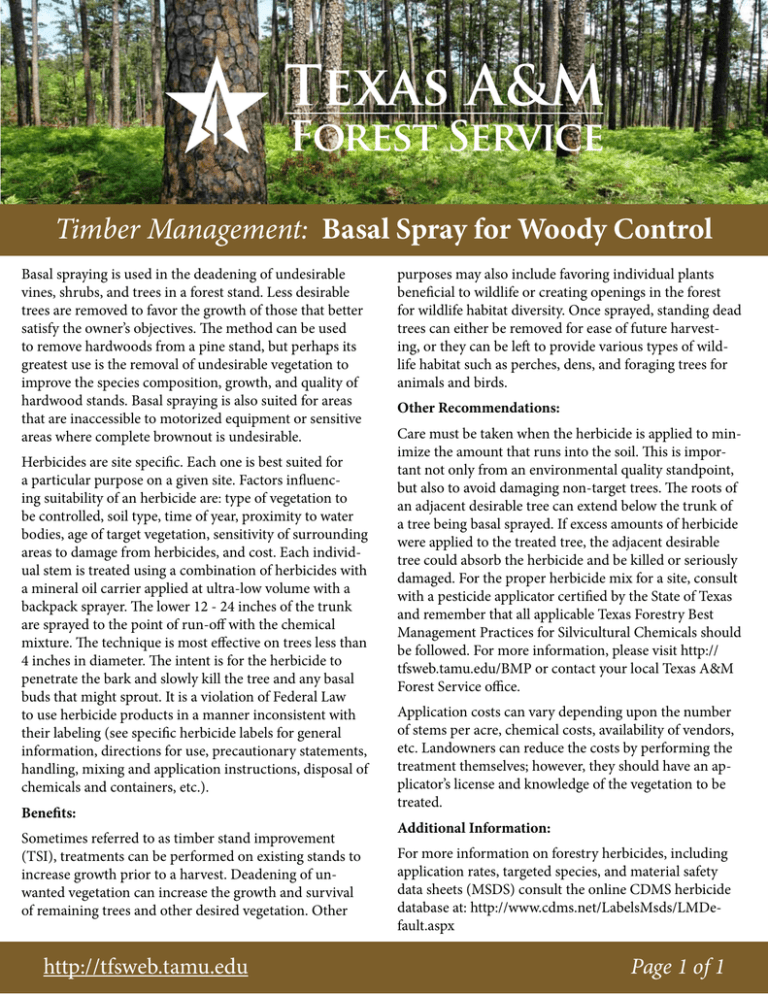
Timber Management: Basal Spray for Woody Control Basal spraying is used in the deadening of undesirable vines, shrubs, and trees in a forest stand. Less desirable trees are removed to favor the growth of those that better satisfy the owner’s objectives. The method can be used to remove hardwoods from a pine stand, but perhaps its greatest use is the removal of undesirable vegetation to improve the species composition, growth, and quality of hardwood stands. Basal spraying is also suited for areas that are inaccessible to motorized equipment or sensitive areas where complete brownout is undesirable. Herbicides are site specific. Each one is best suited for a particular purpose on a given site. Factors influencing suitability of an herbicide are: type of vegetation to be controlled, soil type, time of year, proximity to water bodies, age of target vegetation, sensitivity of surrounding areas to damage from herbicides, and cost. Each individual stem is treated using a combination of herbicides with a mineral oil carrier applied at ultra-low volume with a backpack sprayer. The lower 12 - 24 inches of the trunk are sprayed to the point of run-off with the chemical mixture. The technique is most effective on trees less than 4 inches in diameter. The intent is for the herbicide to penetrate the bark and slowly kill the tree and any basal buds that might sprout. It is a violation of Federal Law to use herbicide products in a manner inconsistent with their labeling (see specific herbicide labels for general information, directions for use, precautionary statements, handling, mixing and application instructions, disposal of chemicals and containers, etc.). Benefits: Sometimes referred to as timber stand improvement (TSI), treatments can be performed on existing stands to increase growth prior to a harvest. Deadening of unwanted vegetation can increase the growth and survival of remaining trees and other desired vegetation. Other http://tfsweb.tamu.edu purposes may also include favoring individual plants beneficial to wildlife or creating openings in the forest for wildlife habitat diversity. Once sprayed, standing dead trees can either be removed for ease of future harvesting, or they can be left to provide various types of wildlife habitat such as perches, dens, and foraging trees for animals and birds. Other Recommendations: Care must be taken when the herbicide is applied to minimize the amount that runs into the soil. This is important not only from an environmental quality standpoint, but also to avoid damaging non-target trees. The roots of an adjacent desirable tree can extend below the trunk of a tree being basal sprayed. If excess amounts of herbicide were applied to the treated tree, the adjacent desirable tree could absorb the herbicide and be killed or seriously damaged. For the proper herbicide mix for a site, consult with a pesticide applicator certified by the State of Texas and remember that all applicable Texas Forestry Best Management Practices for Silvicultural Chemicals should be followed. For more information, please visit http:// tfsweb.tamu.edu/BMP or contact your local Texas A&M Forest Service office. Application costs can vary depending upon the number of stems per acre, chemical costs, availability of vendors, etc. Landowners can reduce the costs by performing the treatment themselves; however, they should have an applicator’s license and knowledge of the vegetation to be treated. Additional Information: For more information on forestry herbicides, including application rates, targeted species, and material safety data sheets (MSDS) consult the online CDMS herbicide database at: http://www.cdms.net/LabelsMsds/LMDefault.aspx Page 1 of 1

